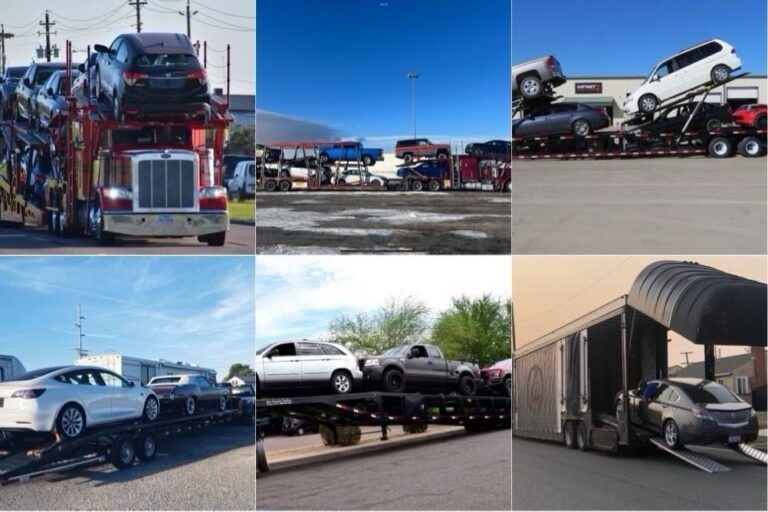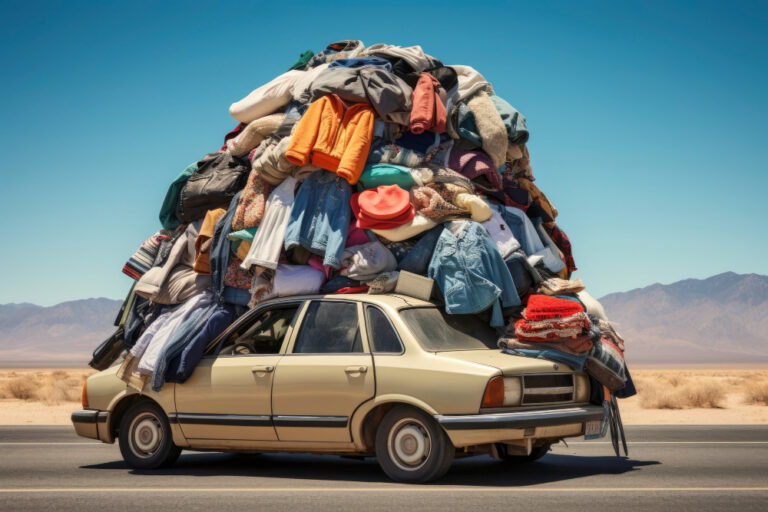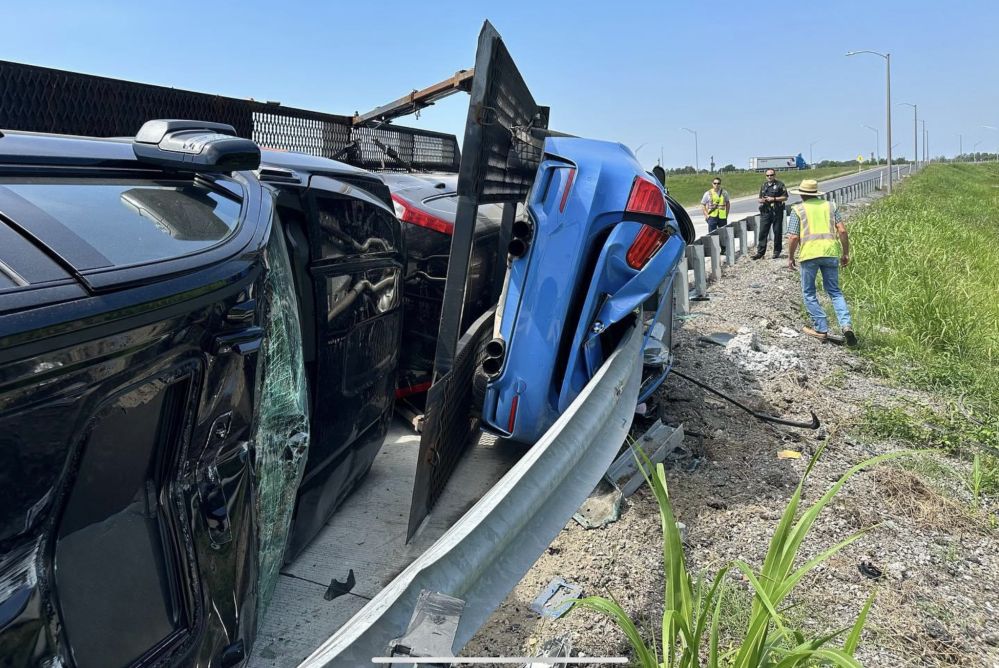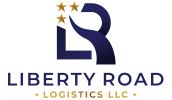Frequently Asked Questions
Shipment Options
Most vehicles are shipped using open carriers, which is a fine option for most shipments. There are different types of open carriers, some with space for 2 or 3 cars, and others that can transport 6-9 cars. The cost for shipping on smaller carriers is a little higher than on larger ones. Smaller carriers are often used on shorter regional hauls. If your car is one that you drive every day, it's probably best to use open transport.
If your shipment is very important, it's better to use an enclosed carrier. The cost will run 30% to 50% more than using an open carrier, but it can protect your vehicle from bad weather, debris, tree branches and theft.
Hot Shot trailers are small and can carry different types of freight, like cars and campers. They are open trailers with 1 or 2 units. If you need to ship different things, like a truck and boat, Hot Shot trailers are a good option. Smaller trailers are usually quicker, as they can pick up and deliver faster with fewer stops.
Big car haulers can haul more cars more cheaply than small ones. Large haulers can transport the same number of cars in one trip that may take small haulers two or three trips. If shipping a single vehicle, it can be hard to find space on a big hauler when there is a high demand from manufacturers, rental companies, dealers, and load aggregators who ship full loads from one place to another. It's much easier to transport a full load of eight to ten units all at once than a load with 18 stops, 9 on each end.

Rates & Quotes
Digital quoters often employ valuation methods based on rate per mile with a minimum rate. This method can be inaccurate as there is normally a lesser cost PER MILE on cross country shipments than say regional moves. Additionally, your rate per mile will vary based on number of units shipped in the same shipment. Dealers for instance will only care about rate per unit, regardless of miles.
If your shipment is on a common shipping lane, that will work to your advantage. If your shipment is not close to a common shipping lane, it will take a higher rate to come load you up. Chicago IL to Tampa FL is roughly 1200 miles. The cost of that shipment will be notably different than vehicle being transported the same 1200 miles from Lima, OH to Okeechobee, FL. Digital quoters will rarely kick out an accurate quote on that one. TIP: Meeting your shipping company along a common shipping lane should help in reducing your cost.
We give you a professional opinion we are confident in, that we believe will get the job done. IF there are considerations with your shipment that are gray areas, we will advise x, y, and or z may cause us to raise your price but let's try this price level first. You will receive our professional, recommended guidance on the whole journey. You will have complete personal authority over your shipment. There will be no surprises at the end. If you want the peace of mind of a guaranteed quote, let us know.
Fill out the form below and call or text us to make us aware. We will be happy to get you a quote right now. If we are busy, we will do our best to get to you as soon as we can.
You can place an order whenever you like. It is very unlikely a carrier will schedule your shipment more than 2 or 3 days ahead of your ship date.


Other service charges
Sometimes a client needs to store their vehicle for a longer time, before and/or after delivery. This can happen, for example, if someone is changing their job and needs to be away for 30 days in training. They might put their car on a carrier but not be able to receive the car at their new home for four weeks. In this case, we can have the car delivered to a secure storage facility, which will charge for keeping the vehicle safe. The same is true for pick up. If it is not possible to make other arrangements, the client can leave the car at a storage facility to be picked up later on.
If the owner of a vehicle needs a vehicle picked up on a specific day, we can send a rollback to take possession of the vehicle and safely store it until pickup up if the client is not available. The same is true at delivery if the client is not available and does not have a trusted contact to receive the vehicle. The client can pick it up at the secured storage location or request rollback delivery to their address at a time of their choosing. The cost on this service will run $250 to $350 per incident plus $30 a day storage if over 5 days. Those are guidelines and may vary depending on location or region.
Many inoperable cars are shipped each month, but some carriers won't take them because they make loading and unloading harder. However, some companies will take inoperable cars at an extra charge. If you wish to ship an inoperable vehicle it will need to roll, and steer, and the tires will need to hold air. This service will add 25% - 50% to normal transportation cost.
*We do have access to haulers that will haul vehicles that do not roll and steer. These vehicles will need to be loaded and unloaded with your forklift arrangements at pickup and delivery. We WILL levy a heavy surcharge on any client that tells us they have a forklift to load or unload and does not have one at the needed time. We will also refuse future services to that client.
The biggest problem presented by INOP vehicles is loading and unloading. If there is a rollback at the location of loading or unloading that will help. The driver will usually require help loading an INOP vehicle. Some carriers are equipped with a winch on the truck. If you will require a truck with a winch (open or enclosed) - we need to know that BEFORE searching truck space. If a winch is needed, we try to include that in the INOP surcharge. Sometimes we are not successful and a winch charge will run approximately $100.
When a carrier arrives to load or unload your vehicle and has to wait for you, 30 minutes is considered a reasonable time to wait. These drivers attempt to keep a schedule, keeping multiple parties satisfied at the same time, while their required logbook ticks away from the beginning of the day to the end. Sixty minutes becomes a concern and anything over that may incur a detainment fee. $50 per hour, after the first hour is standard.
*PLEAES NOTE: If the carrier did not afford you proper notification of delivery (24 hours and 2 hours)- you will tell them to take it up with us. We will defend that all day.
When your vehicle is booked with a carrier, we do not know which level it will be loaded on, if on a large double level carrier. The driver decides this based on the carrier’s stop order, and your vehicle's size and weight. There is no wrong place to load your shipment, but if you have a soft top convertible, it would be best to request top load. This is because we do not know if the car above yours will be old, leaking transmission fluid or with oil leaks, which is not uncommon. Another reason for requesting top load is to provide your shipment a little extra barrier from road grime and rock ships from passing vehicles while in transit. Top load request adds $100.
*One level, smaller carriers, with no vehicles overhead, are considered top load.
When we ship a vehicle, we start with known weight and dimensions from the factory. If there have been changes, like added equipment or modifications, we need to know about them so the carrier can plan accordingly. These changes can impact the price. If the carrier is not made aware of the modifications, we might be charged more with no way to contest it. It's better to be upfront with the carrier about any modifications so we can avoid potential complaints and unwanted surcharges from a carrier. Modifications include: lift kits, large tires and wheels, ladder racks, luggage racks, bike racks, bed toppers and covers, front bumper brush guards and bull bars, fixed light bars, equipment and toolboxes etc.
Preparing your shipment
Auto transporters are not moving companies. Carriers who transport household goods need a special authority to do so. They know the weight and dimensions of your vehicle. They build their loads based on that data. Ask permission before doing so and expect to pay an extra $100 if you want to add something to the car. Make sure it is under 100 pounds and the driver can see out of all windows. So always ask for permission, and respect the carrier's willingness to do you a favor. PERSONAL BELONGINGS IN VEHICLES ARE NOT INSURED.
The answer to this question often varies. If your car will be shipped on an oceangoing vessel at any point, yes, it needs to be under 1/4 of tank. If you are shipping your vehicle within the lower 48, no, that isn't necessary. The lower the fuel level the better, but don't lose any sleep or go out of your way. The only concern is weight.
If you have an aftermarket addition to your vehicle, and it flies off in transit on an open trailer, that is not considered damage, and the carrier will not be responsible. If that is a possibility, you should consider shipping your vehicle enclosed. Any attachment to your vehicle needs to be bolted on. If you have a bed cover on a pickup truck that comes off, carrier will not be responsible for the cover, or any damage incurred by the loose cover putting out a rear window or banging on the bed. Other items to note that commonly come off are plastic window trim guards and bug shields. Any of the above should be properly secured or removed from the vehicle prior to shipment.
Shipping within the lower 48, there is no documentation requirement. The only required documentation is a signed bill of lading showing Shipper, receiver and addresses. The driver is responsible for having and possessing this document. If you are shipping into Canada or overseas, other documents need to proceed your car to the port or border.
All security alarms should be disconnected, disabled or turned off.
Don't forget to remove your garage door opener if it is a handheld that belongs to the building you are leaving.


Pickup & Delivery
As we have stated, auto transport is a fluid process. It is all a function of truck space, price and time- in that order. We need approximately a 3 to 5 day window to get a truck under your shipment. Pickup at a specific time and date is available if you are on a drop-dead time schedule. That is an added cost, see next topic.
In the event you need your vehicle picked up on a specific day, we will locate a local third-party contractor in your area who will, at our request, come load your shipment, and take it to a secure storage location that will hold it for us until truck space is secured. The cost for that service varies per region, but $250-$350 is the norm.
Once we secure truck space, we pass your information on to the hauling company. It is industry standard that the hauler contacts the shipper to arrange pickup 24 hours ahead, and then verify a couple hours away. The 24 hour call, would be the call to inform hauler of a pickup location if coming to your address presents any travel or damage risk to the hauler. (low trees or narrow, weight restricted streets).
There are many different equipment setups available to us. They vary by size, capacity and weight. All of these carriers will do the best they can to get as close to your address as possible to load your shipment. However, an 80,000 pound hauler may be prohibited by law from traveling on neighborhood streets. Many people have seen a "moving truck" in the neighborhood, but Car haulers are not the same. The large trucks are often 14 feet tall, and the neighborhood trees are not always trimmed as they should be. A hauler can have a very high damage bill in very short order running a load of cars down a street with low hanging trees. Tight turns in route are something to be considered; some of these haulers can be 80 feet long. For that reason, a hauler will often ask you to meet them around a commercial area or large parking lot. Good suggestions are about anywhere big trucks deliver. Truckstops, shopping centers with communal parking, Walmart, Lowes, Menards, roads with breakdown lanes or extra wide turn lanes far from the intersection are all good suggestions. If you are not comfortable making a suggestion, the driver will have plenty of experience picking a good spot to meet up.
The carrier is responsible for delivering the vehicle to you at the delivery location in the same condition as it was when they picked it up. For that reason, carrier is required to perform an inspection and fill out a condition report at the time of pick up. Most of this is done digitally on a mobile app. They sign it. You sign it. Provide your email address and REQUEST A COPY OF THAT REPORT. If it is a paper process, get a copy. This foundational information will be needed if your vehicle is damaged during shipping. We will have to prove damage did not exist prior to shipping. Rest assured, damage is very rare, but being prepared is over half of the battle. Please also see "CR" below in Damage Discussion section.
Some carriers are pulling 3 units at a time, which means 6 stops or less. Large haulers may have 8-9 units, up to 9 stops on each end, or 18 stops. Time in transit is hard to ascertain when it is impossible to know exactly where your shipment sits with respect to the carrier's other stops and route to be driven. Rarely does a multi-stop route look like a straight line. Once on a truck, 7-10 days is the norm coast to coast, and 4 to 5 days North to South. If you are last on and first off, its FAST. If you are first on and last off, you may be wondering where your car is by the time you receive it. We will be walking with you every step of the journey.
When you move or travel, it's possible that you won't be available to give or receive a shipment. But it's okay if you choose someone you trust to to represent you. This person can give or receive the keys for you, and it can be a friend, coworker, neighbor, or someone else you trust. This way, you don't actually need to be present for the shipment. But if you don't trust anyone or don't have someone available, we can store the shipment somewhere safe for an extra cost.
Paying for your shipment
There is no wrong answer to this question. Select an option that fits you best. This selection will usually depend on the shipper's availability and who is or is not given the responsibility of payment by the party paying the bill.
- Pay it all up front if you don't want the pickup location or receiving location to deal with payment.
- Pay a deposit of approximately 25% during the transit period to LRL and the remaining balance to the carrier at time of pickup (COP- Cash On Pickup).
- Make a deposit of approximately 25% to LRL after pickup and before delivery, pay the remainder to the driver COD (Cash On Delivery).
We can accommodate about any payment method you desire. The most popular payment methods are Credit Card, Cashier's Check, Money order, Zelle, CashApp, Venmo and Cash.
*Credit Card payments are subject to a 3.5% processing fee.
** Personal checks are accepted and must have cleared our bank before vehicle is picked up. PERSONAL CHECKS ARE NOT ACCEPTED AT DELIVERY.
We understand that the auto transport industry presents trust issues between strangers, handling what is most likely your 1st or 2nd most valuable asset. For that reason we do not ask for payment until your vehicle is loaded and rolling towards its destination, unless you choose to pay the bill in advance. Once loaded, we will contact you for a 25% deposit prior to delivery. Any remainder of payment due will be collected by the carrier upon completion of service.
*Credit card payments are subject to a 3.5% processing fee.
**If deposit amount is not paid prior to delivery, LRL will request carrier not deliver your vehicle until deposit has been paid. In the event client is unable to fulfill payment obligation, the vehicle will be delivered to a secure storage facility. Any marshalling and storage fees incurred will be the client's responsibility in addition to the outstanding balance.


Freight damage discussion
The answers to this question given by most brokers and carriers, per their websites, is perplexing. They will tell you, of course it is. You have nothing to worry about, which is MOSTLY true. Yes, it is law that carriers are required to carry a minimum of $750,000 in liability insurance. That doesn't pertain to you, the shipper. WE DO require them to carry cargo insurance. Why then do people who ship cars still pay for damage?
Shippers are rarely told- you are NOT covered during transit for acts of God (weather related damage - primarily hail or pieces flying off from wind). In such an event, you are most likely covered by your personal auto policy and not by a carrier's cargo policy.
Some damage may occur in transit that is very hard to prove and rarely covered on an open carrier. The most common small damages are damages you would incur driving the vehicle down the road. Small damages would include windshield chips, cracks, rock chips, very slight scratches. If this type of damage is a concern to you, please consider shipping your vehicle in an enclosed carrier.
A carrier may or may not pay for any of these small damages listed above- which puts you in a fight with the carrier's insurance company if they don't. These damages would not meet the carrier's deductible and therefore would be paid out by the carrier if they agree... but didn't we start there?
TIP: For peace of mind, check with your personal auto insurance carrier to review your coverage relative to your transport risk.
Transport damage is very rare but we cannot pretend like there is zero risk. Being prepared is over half of the battle.
The most common complaints of damage are rock chips, windshield cracks and a few scratches. All of these potential damages vary by intensity and may or may not be honored by the carrier. The two primary prevention methods to these are to ship your car in an enclosed carrier and be sure to do a thorough condition report with the carrier, and retain a copy.
At the time of pickup, the driver will do an inspection of your vehicle and fill out a condition report. GET A COPY emailed to you if digital, or a paper copy if it is a form. Take some pictures of your own. Be courteous, but let the driver see you doing it so they can't say you took them at some point in the past. Smart phones stamp images with time date and GPS stamps. Take a picture of your vehicle on the truck showing its position (which may or may not change prior to delivery). Take a picture of the truck, and the required DOT information posted on the side of the truck. That sticker will show Company name and DOT number. If you can take a picture of the truck number also - that may help. Truck number will most likely be on the front side fender.
AT DELIVERY, the driver should do a delivery inspection and take some pictures to protect the carrier from damage claims that may occur after delivery. They will ask you to sign a bill of lading, receiving the car. What is ALSO ASSUMED is that signature accepts the vehicle in good condition without dispute.
You should first compare the condition report in your possession to the current condition of the car at delivery. I am betting all is fine. HOWEVER - if there is new damage, THAT NEEDS NOTATED WHEN YOU SIGN OFF, accepting the car.
Now - we know your friend or neighbor may have received the vehicle on your behalf and no one wishes to put your friend in that position, so understand you can still submit a damage claim to the carrier after delivery. The sooner the better. If it goes past 7 to 14 days, you are probably not getting any damage covered.
TIP: Have this discussion with your auto insurance agent so you know what to expect from them, in the event the move doesn't go as planned.
In the event your vehicle incurs damage during transit, a claim must be submitted to the carrier requesting remedy.
THE FIRST AND MOST IMPORTANT thing you will need in the event of a claim is a copy of the condition report at pickup and a copy of the condition report signed at delivery, noting any damage.
You should get a quote or estimate from a qualified source, estimating the cost of the damage. The carrier should be notified within 7 days, and provided the complaint, both condition reports and your estimate. It is not uncommon for the carrier to ignore that communication, but it is a first step. After that, the carrier's insurance company on file, is contacted and provided the same information. They will probably have an internal form of their own that you will need to fill out, sign and send back with your other documentation. Carrier's insurance company will accept or decline your claim. The carrier will be asked to pay any amount up to their deductible and the Insurance company will send remaining payment on an approved claim.
Ask Us Anything, Anytime.
Let's stay in touch. Drop us a line or give us a call. Let's chat.
